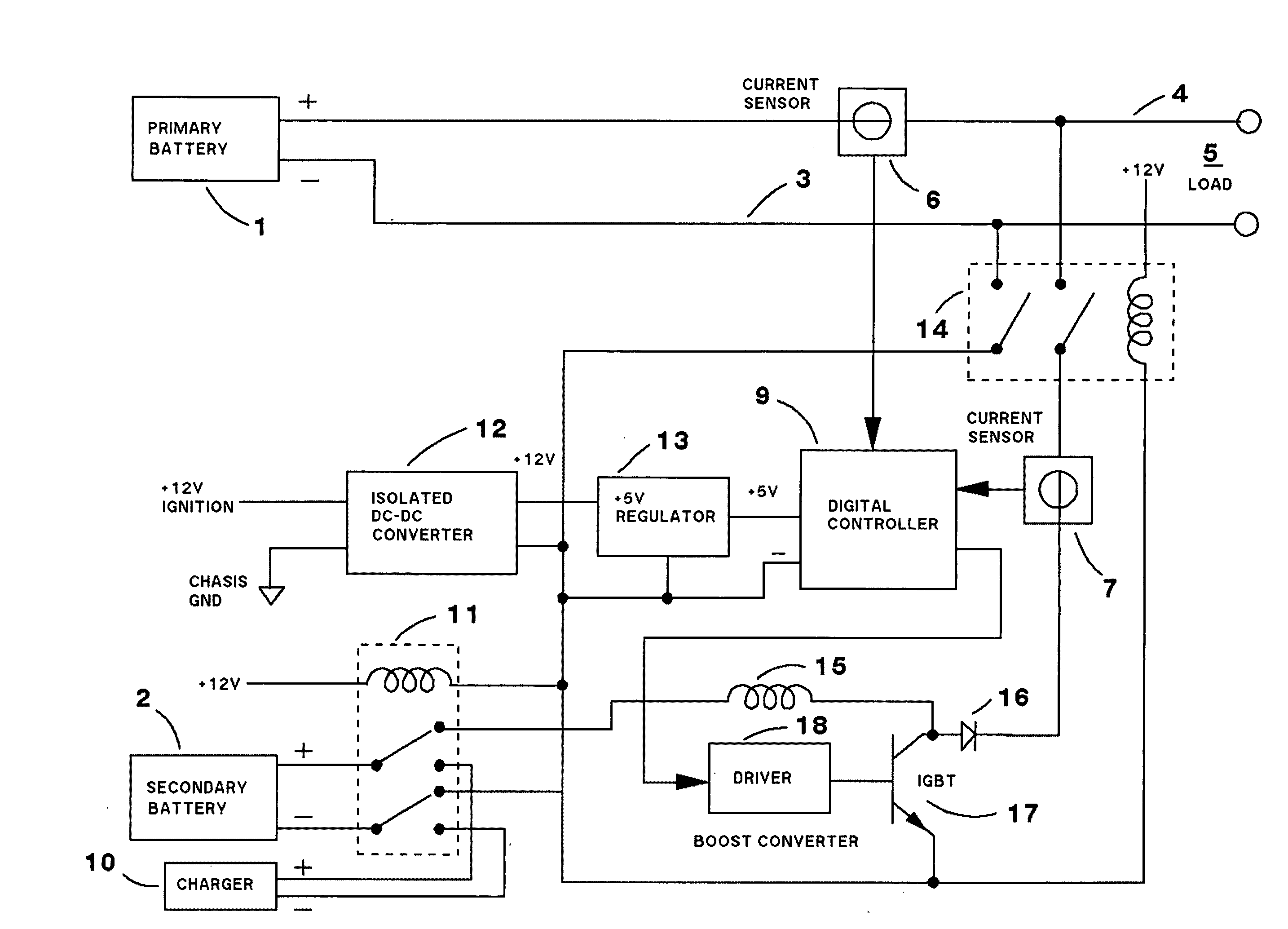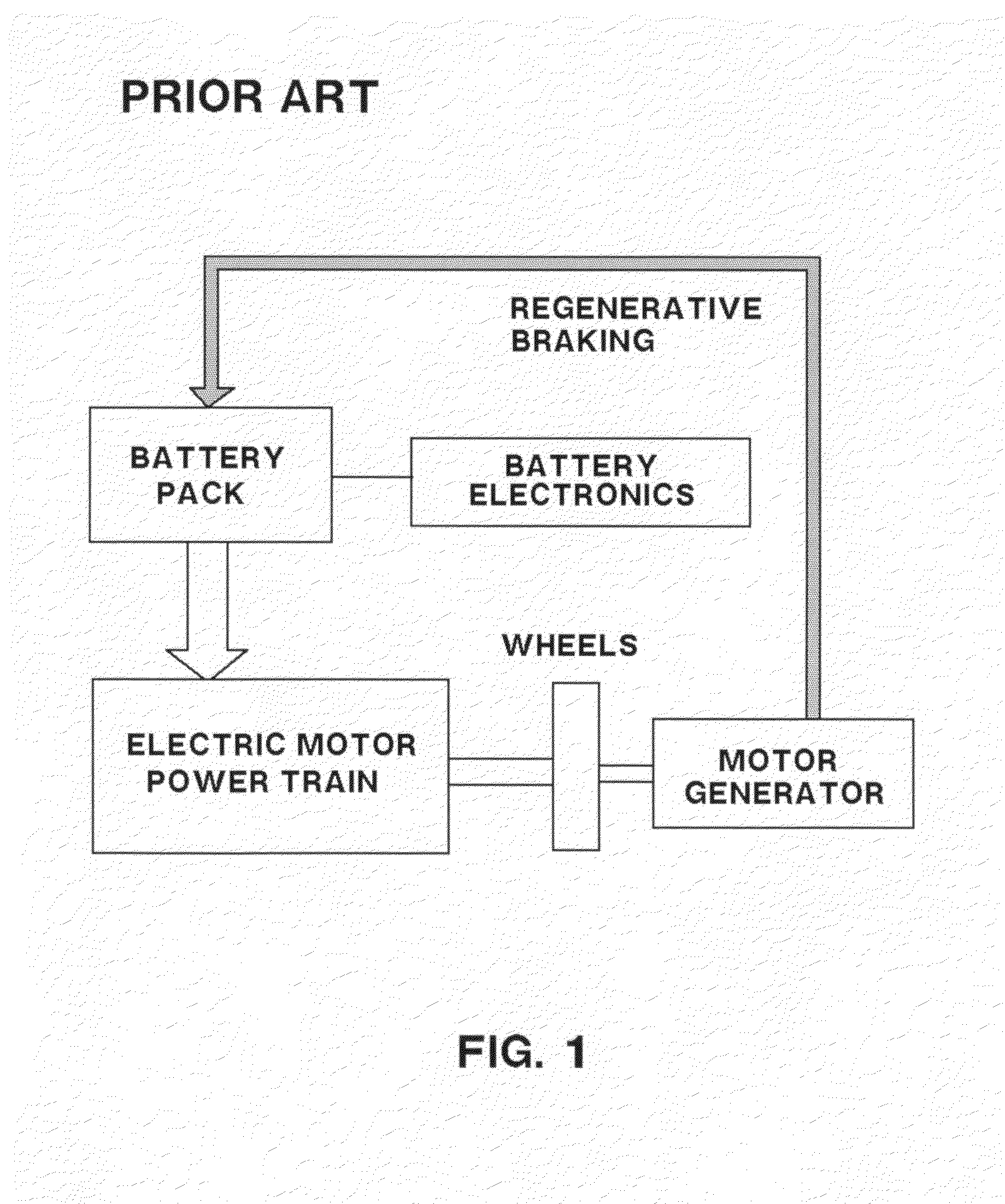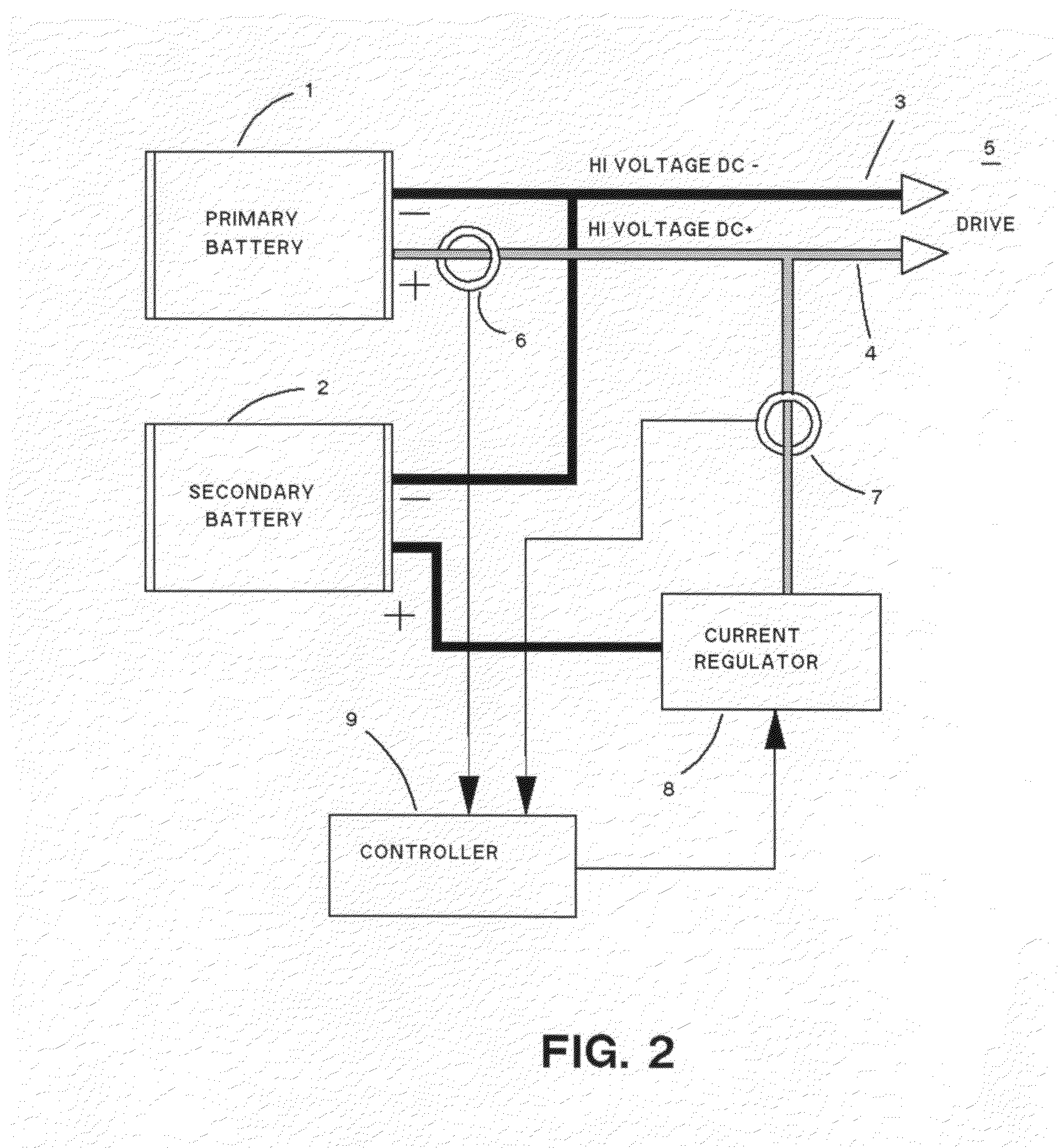System and method for managing energy use in an electric vehicle
a technology for managing energy use and electric vehicles, applied in the direction of electric devices, battery/fuel cell control arrangements, electric devices, etc., can solve the problems of loss of hybrid technology advantages, regenerative braking is disabled, and adding a second battery pack or other secondary energy source to this type of vehicl
- Summary
- Abstract
- Description
- Claims
- Application Information
AI Technical Summary
Problems solved by technology
Method used
Image
Examples
Embodiment Construction
[0018]The present invention relates to putting a secondary energy source in an electric or hybrid vehicle like a Toyota Prius or other vehicle. The secondary energy source is included in a way that requires no interaction with the vehicle's on-board communications system or the vehicle's processors. The secondary energy source, if it is a battery pack, can generally be charged at home or business using the 110 volt line. FIG. 2 shows a block diagram of a particular embodiment of the present invention using a battery as a secondary energy source. It should be realized that any secondary energy source can be used and is within the scope of the present invention including a fuel cell or any other source of electric power. The present invention also applies to any type of electric system or vehicle that itself can have any type of primary energy source. As shown in FIG. 2, a primary battery 1 drives DC current into the vehicle load 5 through a high voltage DC bus containing a + line 4 a...
PUM
 Login to View More
Login to View More Abstract
Description
Claims
Application Information
 Login to View More
Login to View More - R&D
- Intellectual Property
- Life Sciences
- Materials
- Tech Scout
- Unparalleled Data Quality
- Higher Quality Content
- 60% Fewer Hallucinations
Browse by: Latest US Patents, China's latest patents, Technical Efficacy Thesaurus, Application Domain, Technology Topic, Popular Technical Reports.
© 2025 PatSnap. All rights reserved.Legal|Privacy policy|Modern Slavery Act Transparency Statement|Sitemap|About US| Contact US: help@patsnap.com



